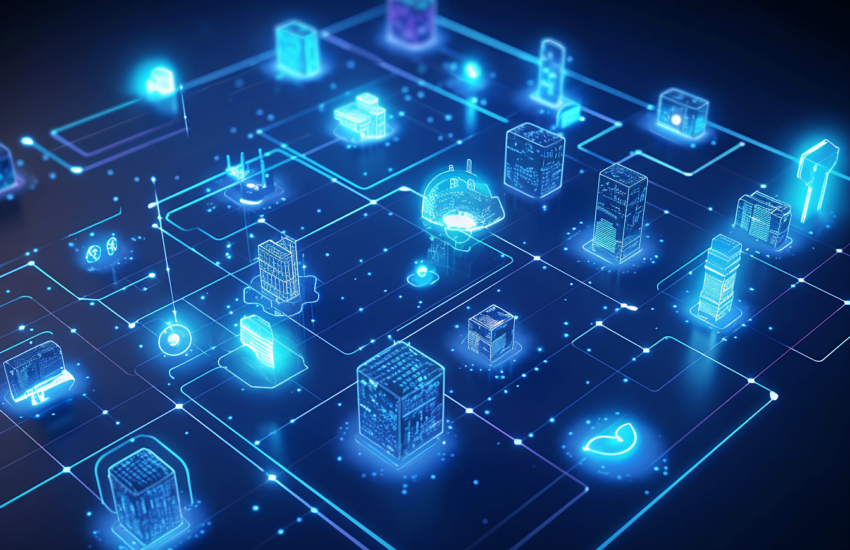The Future of Computing is at the Edge: What Enterprise Leaders Need to Know
Today’s enterprises are facing enormous amounts of data from billions of devices. From sensors and cameras to autonomous vehicles and drones, the need for real-time processing of data is critical for business success.
Edge computing is a game-changing solution for today’s rapidly evolving tech landscape.
Edge computing offers a powerful new approach to data processing that delivers faster response times, greater reliability, and improved security compared to traditional cloud-based computing. Continue reading to learn more about how enterprises can use edge computing to their advantage.
- Improved Data Privacy and Security
By decentralizing data processing and storage, edge computing minimizes reliance on centralized servers and cloud infrastructure. As a result, this reduces the risk of data breaches and unauthorized access. With edge computing, data is processed and analyzed closer to the source (where it is a sensor, device, or user) allowing for real-time data processing while minimizing the need for data to travel over networks.
This distributed approach enables organizations to retain greater control over their data, ensuring that critical information remains within their premises. This also reduces exposure to potential security vulnerabilities associated with transmitting data over long distances or through public networks.
Edge computing empowers enterprises with enhanced privacy features by minimizing the need to share sensitive data with external entities. With traditional cloud computing models, businesses often need to transfer and store vast amounts of data on remote servers. This can raise concerns about data sovereignty and compliance with regulations.
In contrast, edge computing enables organizations to process and analyze data locally, keeping it within their infrastructure and minimizing the need for data transfer to external environments. This localized approach reduces the potential for data interception or unauthorized access during transit.
This provides enterprises with an added layer of privacy and control over their sensitive information. By embracing edge computing, enterprise leaders can fortify their data privacy and security strategies, fostering a more resilient and protected digital ecosystem for their organizations.
- Reduced Latency
In today’s fast-paced digital landscape, reducing latency is a top priority for enterprise leaders seeking to deliver seamless user experiences and gain a competitive edge. Edge computing emerges as a game-changer in this realm by bringing processing power closer to the edge of the network, significantly reducing the time it takes for data to travel from source to destination.
By moving computation and data storage closer to where it is needed, edge computing minimizes the distance data needs to traverse. Therefore, reducing latency and enabling real-time decision-making.
Traditional cloud computing models often rely on centralized data centers, which can introduce latency due to the distance between the user and the server. In contrast, edge computing leverages distributed infrastructure, placing computing resources closer to the end-users or devices.
This proximity allows enterprises to process and analyze data locally, eliminating the need for round trips to distant servers. By leveraging edge computing, enterprise leaders can achieve remarkable improvements in latency, resulting in faster response times, reduced network congestion, and enhanced user experiences.
With lower latency, businesses can optimize critical processes, such as real-time data analysis, video streaming, or IoT applications, enabling them to unlock new opportunities and deliver exceptional services in today’s digital age.
- Cost Reduction
In the pursuit of optimizing operational efficiency and maximizing profit, enterprise leaders are turning to edge computing for cost-effective solutions.
As aforementioned, decentralizing data processing and storage secures data privacy. This also reduces organizational costs by significantly reducing reliance on expensive centralized infrastructure and data centers. This shift allows enterprises to leverage smaller, more localized edge computing devices or servers. These devices are often more affordable to deploy and maintain compared to large-scale data centers.
Similarly, we discussed how edge computing reduces latency. This also provides a reduction in bandwidth costs by minimizing the need for extensive data transfers over long distances or through public networks. With edge computing, data is processed and analyzed closer to the source, meaning only relevant, processed data must be transmitted to the centralized systems.
This approach reduces the volume of data that needs to be transmitted and eliminates the need for continuous data transfers, ultimately leading to lower network bandwidth requirements and associated costs.
By adopting edge computing, enterprise leaders can achieve cost savings in terms of infrastructure, maintenance, and network bandwidth, allowing them to allocate resources more efficiently and invest in other critical areas of their businesses.
The financial and operational advantages offered by edge computing make it an appealing solution for forward-thinking organizations striving for cost optimization and sustainable growth in today’s competitive landscape.
What’s next?
Edge computing is a game-changer for enterprises grappling with the ever-increasing volume of data and the need for real-time processing and analytics. By decentralizing data processing and storage, edge computing enhances privacy and security, reduces latency, and offers cost-effective solutions. Enterprises can retain greater control over their data, minimize the risk of breaches, and achieve faster response times by processing data closer to the source.
Furthermore, edge computing enables cost savings by reducing reliance on expensive centralized infrastructure and minimizing bandwidth requirements. As the future of computing, edge computing empowers organizations to optimize their operations, invest resources efficiently, and drive sustainable growth in today’s competitive landscape.
At Iterate.ai, we believe in the power of edge computing so much that we run edge computing on our low-code platform, Interplay®, for faster AI capabilities.
Using our platform, we use edge computing AI to read license plates with cameras, release gas pumps, and enable payments. Our edge computing AI drives robots and mission-critical infrastructure that require near-instant response times. Check out our AI Edge Computing page to learn more about how we can support your AI and edge computing enterprise needs.

